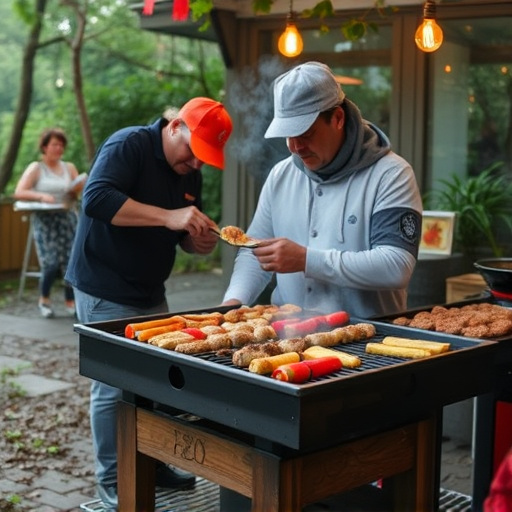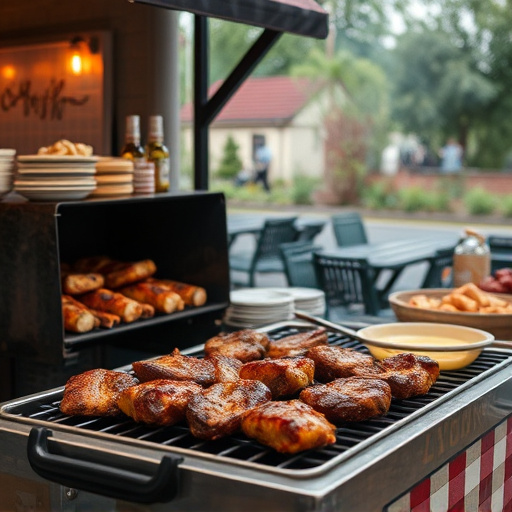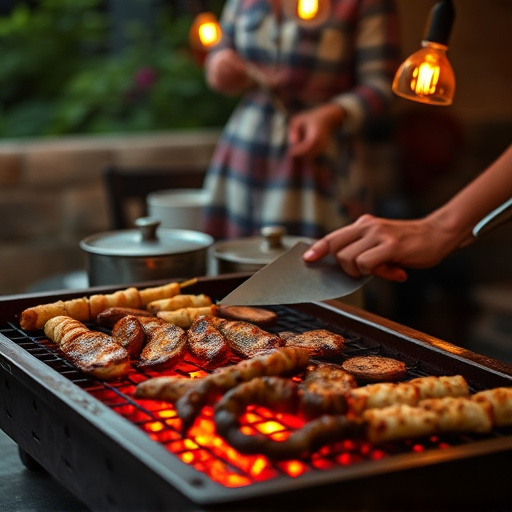Selecting the right cut of ribs (baby back or spare) for a slow cooker BBQ recipe is key. Adjust serving sizes as slow cooking ensures moisture and amplifies flavor. Use meaty ribs with good marbling, cutting between bones for even cooking. Season with a dry rub blend and marinate in BBQ sauce, olive oil, and lemon juice for tender, juicy results.
Looking for a mouthwatering, easy-to-make BBQ ribs recipe? The slow cooker is your secret weapon for perfect, tender ribs every time. This guide takes you on a journey from choosing the right cut of ribs to seasoning techniques and cooking tips. Learn how to select the ideal meat, create a simple yet flavorful dry rub or liquid marinade, and master the art of slow-cooking to achieve those coveted, fall-off-the-bone ribs. Serve with complementary side dishes and enjoy!
- Choosing the Right Cut of Ribs
- – Types of ribs suitable for slow cooking
- – Importance of selecting the right meat
- Seasoning and Marinade
Choosing the Right Cut of Ribs

When it comes to crafting the perfect slow cooker BBQ ribs recipe, selecting the appropriate cut is a fundamental step. Look for ribs with a good balance between meat and fat. The most common cuts for slow-cooker ribs are baby back or spare rib. Baby back ribs have a smaller bone structure and less fat, making them tender and easier to chew after a long cook. Spare ribs, on the other hand, offer a richer flavor but require a bit more time to become fork-tender.
Consider the amount of meat you want to serve per person and choose accordingly. The slow cooker method allows for a leisurely cooking process that ensures the ribs stay moist and flavorful, transforming tough cuts into delectable BBQ delights perfect for a crowd.
– Types of ribs suitable for slow cooking

When it comes to choosing the right ribs for a slow cooker recipe, there are a few options that excel in this method of cooking. The most common types are baby back ribs and spareribs. Baby back ribs, as the name suggests, come from the pig’s baby back area and have less fat and bone compared to other cuts. This makes them tender and easier to chew after slow-cooking. Spareribs, on the other hand, are more meaty and flavorful but can be slightly tougher if not cooked properly. Both types of ribs work well in a BBQ ribs recipe slow cooker, offering delicious results with minimal effort.
The slow cooking process is ideal for breaking down tough connective tissues, making these cuts of meat incredibly tender. The low and slow method allows the flavors from the BBQ sauce to penetrate deep into the ribs, creating a mouthwatering dish. So, whether you’re a BBQ enthusiast or looking for an easy weeknight meal, using your slow cooker to make BBQ ribs is a game-changer.
– Importance of selecting the right meat

Choosing the perfect cut of meat is a key step in creating an exceptional slow cooker BBQ ribs recipe. Look for meaty ribs with good marbling; this ensures the ribs remain tender and juicy throughout the long, slow cooking process. Opting for bone-in ribs provides extra flavor as the marrow enriches the sauce. Ribs should be cut between the bones to ensure even cooking and easy eating. The quality of your meat will significantly impact the final dish, so select a premium cut for the best results.
When it comes to BBQ ribs recipe slow cooker methods, using a good-quality meat is crucial. This allows you to achieve those mouthwatering, fall-off-the-bone ribs everyone loves. Take the time to source the right ingredients, and your delicious slow cooker BBQ ribs will be a hit with every bite.
Seasoning and Marinade

The key to tender, mouthwatering BBQ ribs lies in the seasoning and marinade. For a simple slow cooker recipe, start by rubbing your ribs with a dry rub made from a blend of paprika, garlic powder, onion powder, salt, pepper, and brown sugar. This mix adds depth of flavor as it slowly infuses into the meat during the cooking process.
Before placing them in the slow cooker, let the ribs sit in a marinade consisting of your favorite BBQ sauce mixed with a touch of olive oil and a squeeze of lemon juice. This step enhances tenderization by breaking down collagen in the meat and adding extra moisture to prevent dryness.



